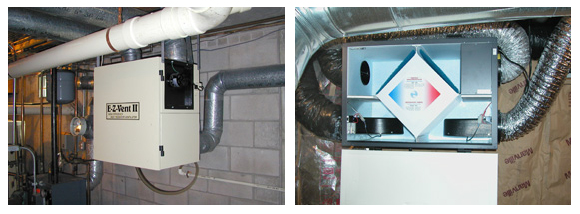Call Us (508) 429-8919
August 31, 2023

Active sub-slab depressurization (ASD), now there’s a term you’ve likely heard about and are seeking more information. Not too many people searching the internet about radon mitigation services know about this technique. Today we hope to educate you a bit about ASD.
In our world of radon detection and mitigation, ASD is a common technique for radon mitigation in both commercial and residential structures. The primary goal of ASD is to reduce the concentration of radon gas in indoor air by creating a pressure difference between the soil beneath the building's foundation (sub-slab) and the indoor living spaces. This pressure difference prevents radon from entering the building and instead directs it to exit safely into the outdoor atmosphere.
In this radon mitigation blog, we will learn how active sub-slab depressurization works:
Initial Assessment: A radon mitigation professional like The Radon Guys begins by conducting an assessment to determine the best approach for mitigating radon in the specific building. This includes factors such as the foundation type, soil conditions, and layout of the house.
Sub-Slab System Installation: A key component of the ASD system is a pipe or pipes that are inserted through the floor slab or other openings into the soil beneath the foundation. These pipes are typically made of PVC and are sealed tightly to prevent air leakage.
Radon Fan: A specialized fan is installed in the piping system. This fan creates a negative pressure zone under the floor slab, causing air and radon gas to be drawn from the soil and channeled through the piping system.
Piping Network: The pipes from the radon fan extend from below the floor slab and can either be directed through the house to vent above the roof or routed outside the building directly from the foundation. The choice of routing depends on factors such as the house's design and aesthetics.
Ventilation Point: The end of the piping system is placed in a location where the expelled radon gas can safely disperse into the outdoor air, away from windows, doors, and other openings that could allow the gas to re-enter the building.
Pressure Differential: By maintaining a slightly lower pressure beneath the floor slab compared to the indoor living spaces, the system prevents radon from entering the building. Any radon-laden air in the soil is instead drawn into the piping system and expelled outdoors.
Monitoring: After the installation, the system's effectiveness is verified through radon testing. Monitoring may involve short-term and long-term measurements to ensure that radon levels have been adequately reduced.
Active sub-slab depressurization is a reliable and effective method for radon mitigation. It's important to have the system installed by a qualified professional such as The Radon Guys who can accurately assess the building's needs and install the components correctly. Additionally, regular maintenance and occasional fan replacement might be necessary to ensure the continued effectiveness of the system.
GET STARTED TODAY —
REQUEST A QUOTE
Fill out the form below to get more information. *are required fields
